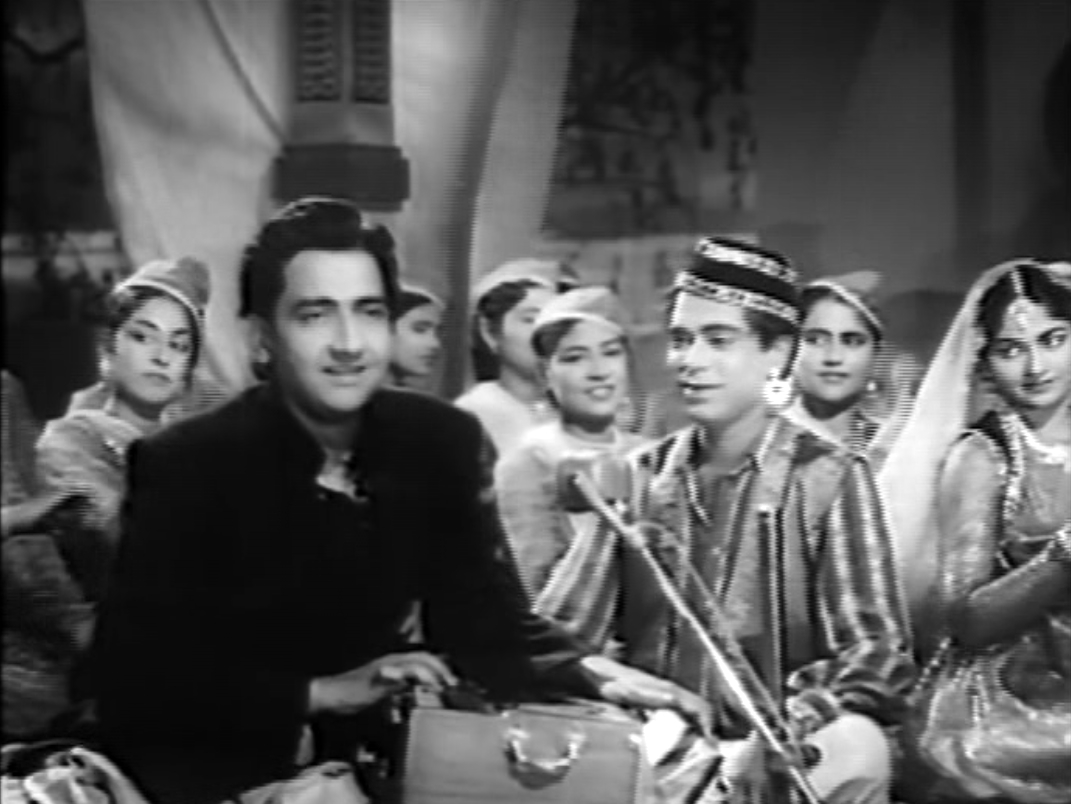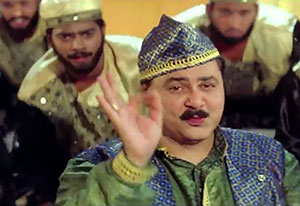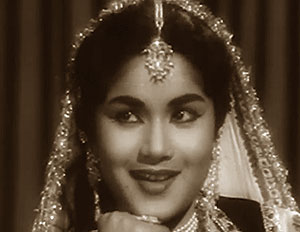Excerpts from the forthcoming book
Qawwali in Bombay Cinema
Yousuf Saeed
While qawwali and Sufi music have become trendy as all over the world, this humble song existed as everyone’s favourite throughout 20th century India, especially as a staple of the  entertainment industry and popular cinema. Though Bombay cinema is often blamed for making the qawwali ghatiya or cheap, this project proposes that in reality Indian cinema not only helped popularize the qawwali but also transformed it from a sacred song to a mode of secular entertainment, keeping it flexible and inclusive enough to be used as a device of storytelling and emotional catharsis. How has the traditional qawwali been altered or affected by Bombay cinema to make it the unique cinema qawwali? Musically, the qawwali’s growth pattern was no different from the evolution of Bombay film music in general. For instance, as the technology of sound recording progressed in early twentieth century, film music started using larger orchestras and non-traditional instruments. To attract and impress their audiences, Indian film industry relies on excess of everything, just like other forms of popular culture. Thus, the humble harmonium, dholak, tablas, and bansuri gave way to violins, cellos, piano, drum-kit, and guitars in the film songs, including qawwali.
entertainment industry and popular cinema. Though Bombay cinema is often blamed for making the qawwali ghatiya or cheap, this project proposes that in reality Indian cinema not only helped popularize the qawwali but also transformed it from a sacred song to a mode of secular entertainment, keeping it flexible and inclusive enough to be used as a device of storytelling and emotional catharsis. How has the traditional qawwali been altered or affected by Bombay cinema to make it the unique cinema qawwali? Musically, the qawwali’s growth pattern was no different from the evolution of Bombay film music in general. For instance, as the technology of sound recording progressed in early twentieth century, film music started using larger orchestras and non-traditional instruments. To attract and impress their audiences, Indian film industry relies on excess of everything, just like other forms of popular culture. Thus, the humble harmonium, dholak, tablas, and bansuri gave way to violins, cellos, piano, drum-kit, and guitars in the film songs, including qawwali.
********
 The body language and costumes given to the qawwals in the movies (whether in a dargah or a secular space) are often what makes them the most typical ‘Muslim’ characters created by Bombay film industry – a shiny achkan (robe) and velvety crooked cap, lips red due to munching of paan (betelnut), a flowing handkerchief in a hand, and a wicked smile. This is how actor Pran acts in a qawwali ‘Jeena to hai usi ka’ from the film Adhikar (1971) where he introduces himself as Banne Khan Bhopali, a Muslim side-character on the lines of Soorma Bhopali of Sholay (1975). This stereotype of Muslim community is further exemplified in the movies through a qawwali performed at a Sufi shrine to provide catharsis to a protagonist who goes through rough times in the plot, often in movies informally known as the Muslim Socials that dealt with stories of Indian Muslim families. But then, many other situation types were also used as backdrop for a qawwali, not necessarily all associated with a Muslim identity or a mystical/sacred context. In many movies throughout 20th century, a cheerful qawwali was spontaneously launched by men or women just to enjoy a special moment like a festival, a picnic with friends or a mischievous dialogue between young men and women. And despite the cultural and sectarian politics arising in Bombay cinema in the recent decades, the qawwali and Sufi music continues to remain an integral part of the movies even today. This project hopes to enlist and analyze various examples of cinema qawwalis to see how they digress in form and content from the traditional mystical qawwali and how they affected the practice of the latter in turn, if at all.
The body language and costumes given to the qawwals in the movies (whether in a dargah or a secular space) are often what makes them the most typical ‘Muslim’ characters created by Bombay film industry – a shiny achkan (robe) and velvety crooked cap, lips red due to munching of paan (betelnut), a flowing handkerchief in a hand, and a wicked smile. This is how actor Pran acts in a qawwali ‘Jeena to hai usi ka’ from the film Adhikar (1971) where he introduces himself as Banne Khan Bhopali, a Muslim side-character on the lines of Soorma Bhopali of Sholay (1975). This stereotype of Muslim community is further exemplified in the movies through a qawwali performed at a Sufi shrine to provide catharsis to a protagonist who goes through rough times in the plot, often in movies informally known as the Muslim Socials that dealt with stories of Indian Muslim families. But then, many other situation types were also used as backdrop for a qawwali, not necessarily all associated with a Muslim identity or a mystical/sacred context. In many movies throughout 20th century, a cheerful qawwali was spontaneously launched by men or women just to enjoy a special moment like a festival, a picnic with friends or a mischievous dialogue between young men and women. And despite the cultural and sectarian politics arising in Bombay cinema in the recent decades, the qawwali and Sufi music continues to remain an integral part of the movies even today. This project hopes to enlist and analyze various examples of cinema qawwalis to see how they digress in form and content from the traditional mystical qawwali and how they affected the practice of the latter in turn, if at all.
********
In 1935, the singer Jaddan Bai (the mother of actress Nargis) emerged as the first woman music director in Indian cinema by composing for the film Talash-e Haq, in which she sang a qawwali “Rasool-e Khuda O Kamli wale” among other songs whose recordings are not available. Since 1930s was also the time when India’s freedom struggle and Gandhian reformation were at their peak, many movies and their songs carried patriotic messages for the masses. In fact, one of the first qawwalis whose decent quality recording is available, Bhari hai aag matwale teri botal ke paani mein from Brandy ki Botal (1939), exhorts against liquor consumption and praises the Congress for eliminating alcohol from India. It even has a message for both Hindus and Muslims to replace liquor in their bottles with:
Hinduon tum apni botalon mein Ganga ka jal rakhna
Aur musalmanon tumhare jam hon Zamzam ke paani mein.
(Hindus, please keep the holy water of Ganges in your bottles,
And Muslims, your cups should have the Zamzam water.)
********
 A strange fact about the career of the sensational artist Shakila Bano Bhopali is that the film industry used her appearance and name as a qawwal but not her voice. Her qawwali in Ustadon ke Ustad (1963) depends on her acting, adayen and teasing gestures (some close-ups especially crafted for the camera), but the voice is provided by Asha Bhosle. Same is the case with Harfan Maula (1976), Dastak (1970), and Jaan-e Wafa (1990), where she is introduced as Shakila Bano Bhopali but someone else, usually Asha or Lata Mangeshkar, sings her song. In Shraddhanjali (1981) Shakila appears as a wedding singer performing the famous bidayi (daughter’s departing) song Sayyan doli leke aye tere dvar, but the voice is apparently Shoba Gurtu’s. A probable reason for this is that her voice was rather rustic and folkish and not as refined as that of the seasoned playback singers. The industry loved her looks and the alluring gestures, but her voice didn’t fit her beauty, at least cinematically. On the other hand, the movies used the voice as well as the presence of traditional male qawwals like Jani Babu, Aziz Nazan, Isamil Azad or Yusuf Azad precisely for their rustic and uncouth voice, to contrast with the refined playback singers. But as one can observe, being male and rustic is fine, whereas a woman has to be ‘pleasing’ both in her voice as well as looks.
A strange fact about the career of the sensational artist Shakila Bano Bhopali is that the film industry used her appearance and name as a qawwal but not her voice. Her qawwali in Ustadon ke Ustad (1963) depends on her acting, adayen and teasing gestures (some close-ups especially crafted for the camera), but the voice is provided by Asha Bhosle. Same is the case with Harfan Maula (1976), Dastak (1970), and Jaan-e Wafa (1990), where she is introduced as Shakila Bano Bhopali but someone else, usually Asha or Lata Mangeshkar, sings her song. In Shraddhanjali (1981) Shakila appears as a wedding singer performing the famous bidayi (daughter’s departing) song Sayyan doli leke aye tere dvar, but the voice is apparently Shoba Gurtu’s. A probable reason for this is that her voice was rather rustic and folkish and not as refined as that of the seasoned playback singers. The industry loved her looks and the alluring gestures, but her voice didn’t fit her beauty, at least cinematically. On the other hand, the movies used the voice as well as the presence of traditional male qawwals like Jani Babu, Aziz Nazan, Isamil Azad or Yusuf Azad precisely for their rustic and uncouth voice, to contrast with the refined playback singers. But as one can observe, being male and rustic is fine, whereas a woman has to be ‘pleasing’ both in her voice as well as looks.
*********
The illustrated book Qawwali in Bombay Cinema by Yousuf Saeed is in the process of publication.